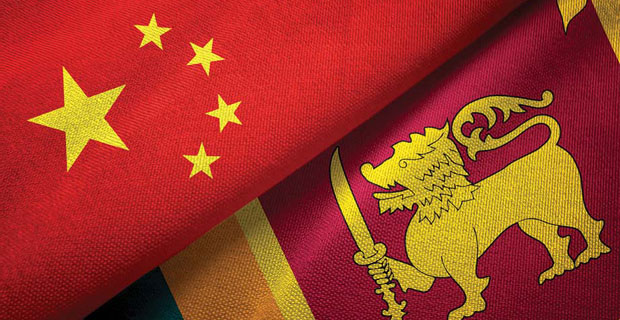Is Sri Lanka Coloured Red?
China has set course on a path of hegemony centred on an expansionist agenda, to realise the malicious vision of Chinese Communist Party (CCP), with the Belt and Road Initiative (BRI) at its core. Sri Lanka post the war has been falsely lured into this entrapment of expensive infrastructure projects shown by China at the cost of unimaginable monetary gains for the state owned Chinese companies. Thus, it is essential that the motive behind this engagement with China is critically examined and understood before Sri Lanka also gets soaked in the ‘Red Colour’, a price that may have to be paid by compromising individuality, existence and even sovereignty.
BRI is the garb to entice nations into futile and ineffectual projects which are extravagant compared to more realistic challenges being faced. The projects are promoted as one of its kind infrastructure development projects with fictitious prospects; however they are of significance and benefit primarily to China. The initiatives provide easier and convenient opportunities to address vulnerabilities of China at the cost and investment of individual nations. The mechanism provides expedient access for Chinese state owned companies to saturate the economies of small nations and saddle the borrowing nation with loans which can be leveraged when needed. In addition, China with its financial freedom has emerged as an independent nation providing financial alternatives over international organisations like IMF, ADB etc. to secure individual and selfish designs.
The infrastructure projects of road, rail, buildings, ports etc. with inflated costs are advertised as comprehensive solutions without disclosing the methodology and terms of execution. The projects in Sri Lanka like the $104 million Lotus tower which never got commissioned or the $209 million Mattala Airport which is the World’s Emptiest Airport, though presumed to be funded by China had all its costs recovered through execution by Chinese entities, using equipment/machinery/material from China including significant proportion of labour/top management. In effect, whilst Sri Lanka paid for the projects, it filled the Chinese treasury for a requirement which was not essential. Further, due to the confidentiality of projects being pursued by the Government the actual cost of the projects are also largely exaggerated.
In light of the growing leverage due to high financial dependency of Sri Lanka there is a steep increase in Chinese imports at terms conducive to the Chinese companies thereby creating a growing trade deficit which in turn devaluating the Sri Lankan Rupee. The East Container Terminal contract which was signed as a tri party agreement between Sri Lanka Port Authority, government of India and Japan for a committed Foreign investment of $400 million was withdrawn by the government of Sri Lanka under the opposition of Port Union primarily motivated by Chinese influence. ECT which was envisaged to be operated by an Indian Private Company was perceived as a huge threat to Chinese run CICT and its monopoly to handle deep draught vessels at Colombo. It was an ideal example of arm twisting by China which adversely affected the investor sentiment and in turn impacted the Sri Lankan economy.











Comments.